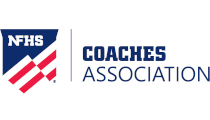One of the most important things a coach can do is to give players time off. Players need a mental and physical break. Some may want to get right back in the gym, and that’s great, but it’s best to give them a couple of weeks off. Their bodies need time to recover from the grind of the regular season. Not only do players need a break, but let’s face it, we as coaches do too. If we don’t step away for a couple of weeks to recharge our batteries, we will no doubt encounter burnout. Coming home and spending quality time with our family is a must when the season is over. Once we have a chance to recharge and reflect upon the recent season, we’ll have the energy and focus to our jobs to the best of our ability.
Players also must be given space. If you put too much on them too soon after the season, you risk burnout. You should have an end-of-season meeting and then give them space to participate and enjoy other activities. It’s extremely important to avoid player burnout in the spring and summer months.
I am a proponent of multiple sport athletes. If your players play a spring sport, give them space to enjoy that sport. It’s fine to work on basketball on the side, but you also want them to miss it. If it’s constant all year round, it can become a burden. By giving your players space, you will allow them to rejuvenate the hunger and desire needed. When it’s time to really get back at it, your players will be energized and excited, not tired and burned out.
One added benefit of giving your players space is the opportunity they will have to lead other teams. Pete Carroll has said he prefers players who were multiple sport athletes because they have shown an ability to complete and lead across multiple sports. Simply by just allowing our athletes the freedom to play and lead in another sport we are indirectly benefiting our programs. Another benefit is that your message will stay relevant. Let’s face it, players need a break from our voice. By having time away from you and the sport, your message is more likely to be received with open ears during the summer and season.
The successful coach also looks for and provides opportunities for player growth and development. It’s important to find a camp, skills trainer and other opportunities outside your program to make your players better which share similar philosophies with you. It will benefit you and your program when other coaches are reinforcing what you’re teaching to your players. I highly recommend finding a local skills coach to send your kids to.
As coaches we receive a ton of mail. A good practice would be to create a file and save all of the information you receive on upcoming camps and skill training sessions outside of your program. By attending other camps you and your player will benefit. Do some research and develop a relationship with a coach or trainer that you trust. The more voices with similar philosophies the better. Don’t limit your players to only what you do; the more opportunities they have, the better your program will become.
When you do get back in the gym and start to work with players again, keep it short and sweet. Stress quality over quantity. It doesn’t matter how long you do something, it matters how well it’s done. Currently we are holding after-school skill training sessions which last about 40 minutes. There is no need to be in the gym for two hours. The key is to design a workout plan that is purposeful, fun and fits the needs of the players and the program. This helps foster the desire to become a better player without pushing them too hard. It should be a gradual buildup from the spring and summer to the fall preseason. The motto during this time period should be to get in, get better and get out.
The final key has nothing to do with on-court improvement but it’s just as important. Coaches should provide players with reading material. Improvement should not be limited to on-the-court skills. Coaches and players must continually work on sharpening their mental game as well. Coaches can assist players with this by giving them articles, video clips and books that will help their mental game. A great practice would be to find articles on leadership and mental toughness. Print these off and give them to your players at school. Once they have had a chance to read it, discuss it with them and reiterate what you wanted them to learn from it.
In this day in age, your team should have its own Facebook and Twitter accounts. These social media sites are great tools to share information via article and video. If used properly, they only help develop your players’ mental game. A great practice would be to post material on leadership, work ethic and motivation to your social media accounts several times a week, if not daily.
Coaching is a 24/7/365 commitment. It never really stops, and there never really is an off-season. Coaching is about making a positive impact in the lives of your athletes, and doing your best to take them to the next level. By implementing these five strategies you will be helping, not hindering, your players’ growth during the offseason.
Kyle Elmendorf
Kyle Elmendorf is in his tenth year as a teacher and coach at Orchard Farm High School in St. Charles, Missouri. He is the head girls basketball coach and assistant football coach.
Most Recent Articles
- nfhs news NFHS Learning Center Delivers 25 Millionth Course
- Track & Field/Cross Country article Effective Communication with Athletes and Coaches
- nfhs news Player Equipment Changes Highlight 2025 High School Football Rules Revisions
- Player Equipment Changes Highlight 2025 High School Football Rules Revisions
- nfhs news Judgment Call on Second Contact Eliminated in High School Volleyball






